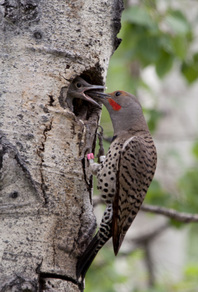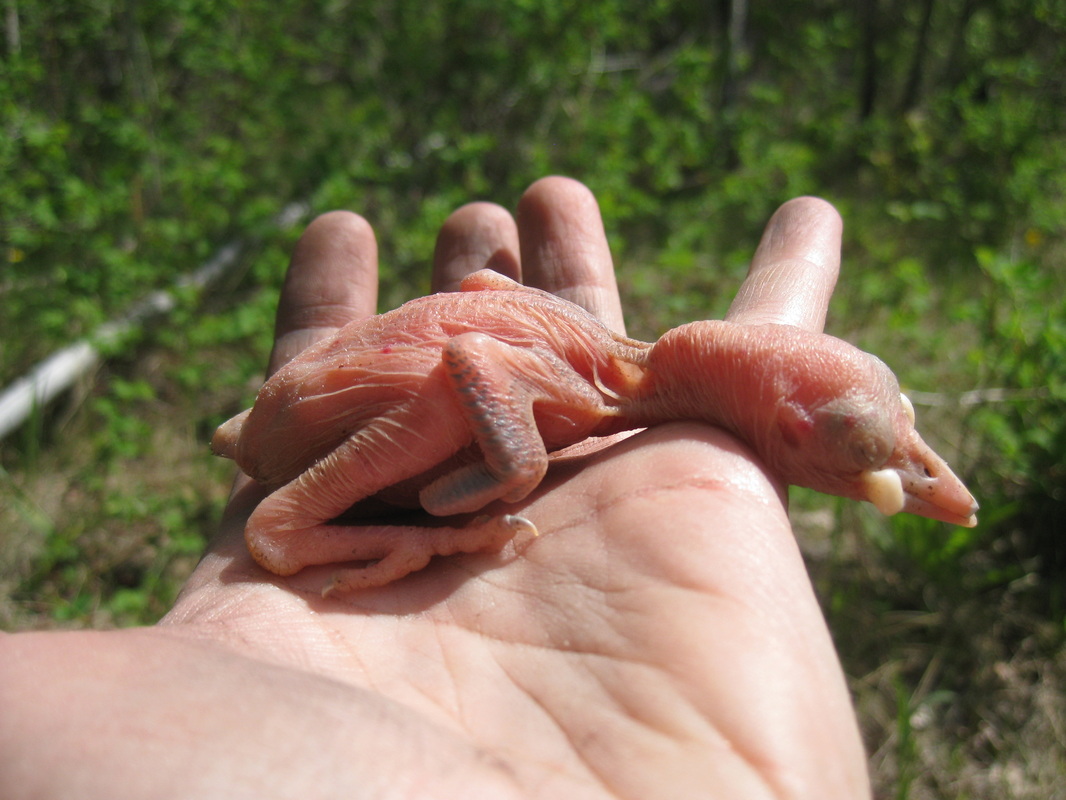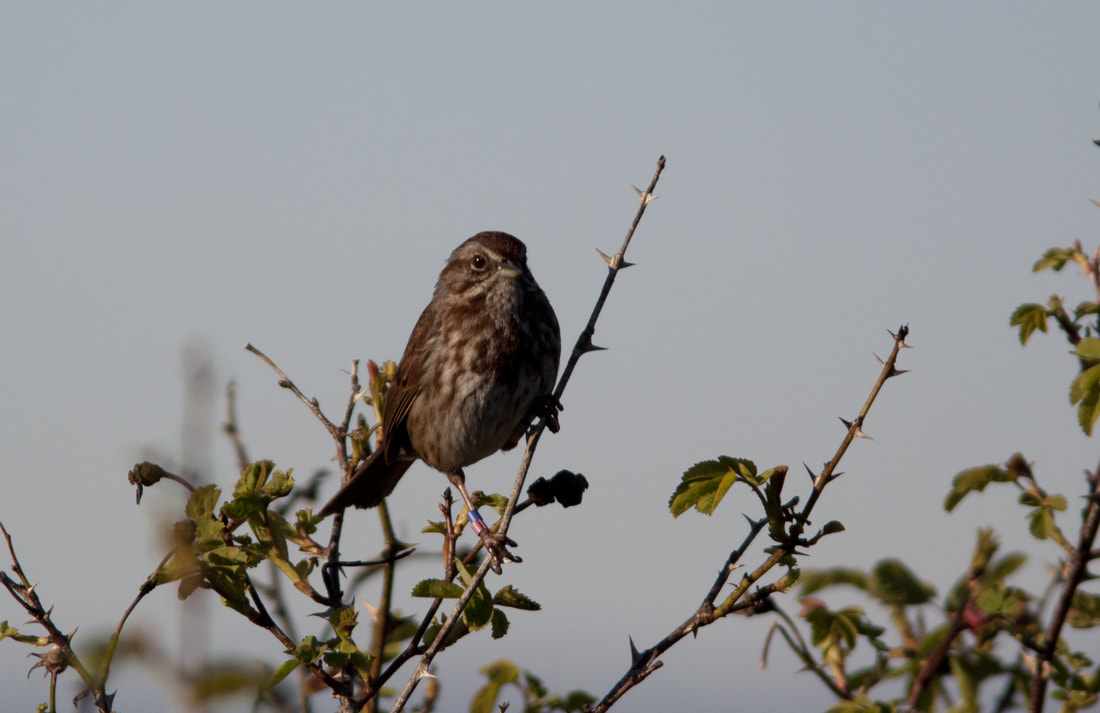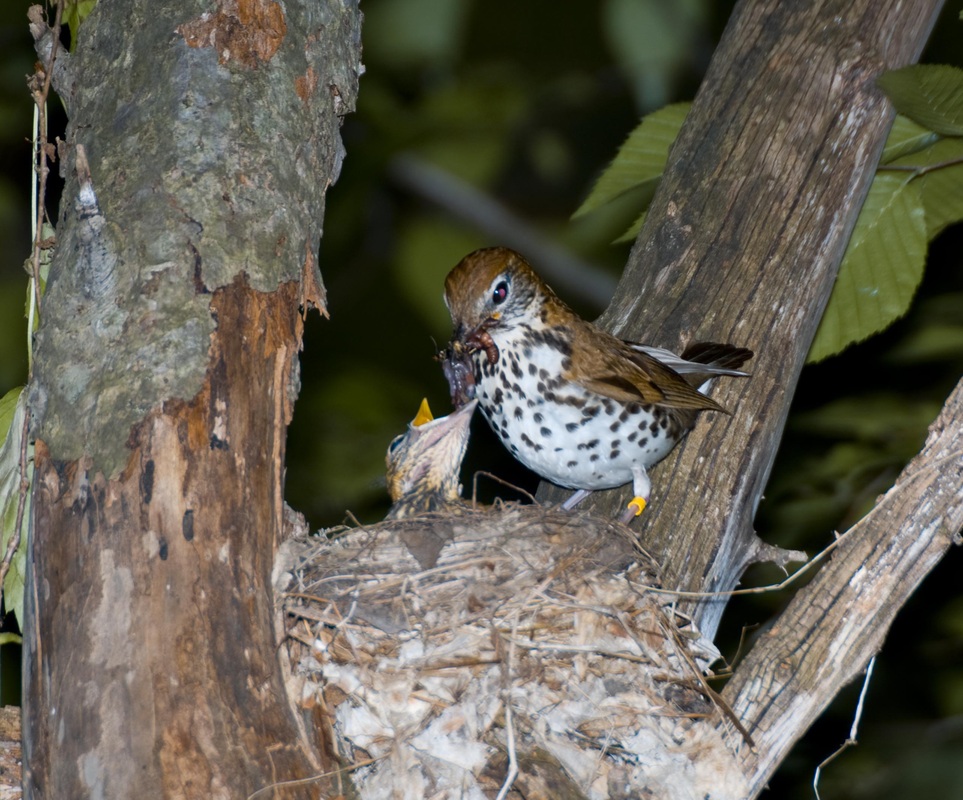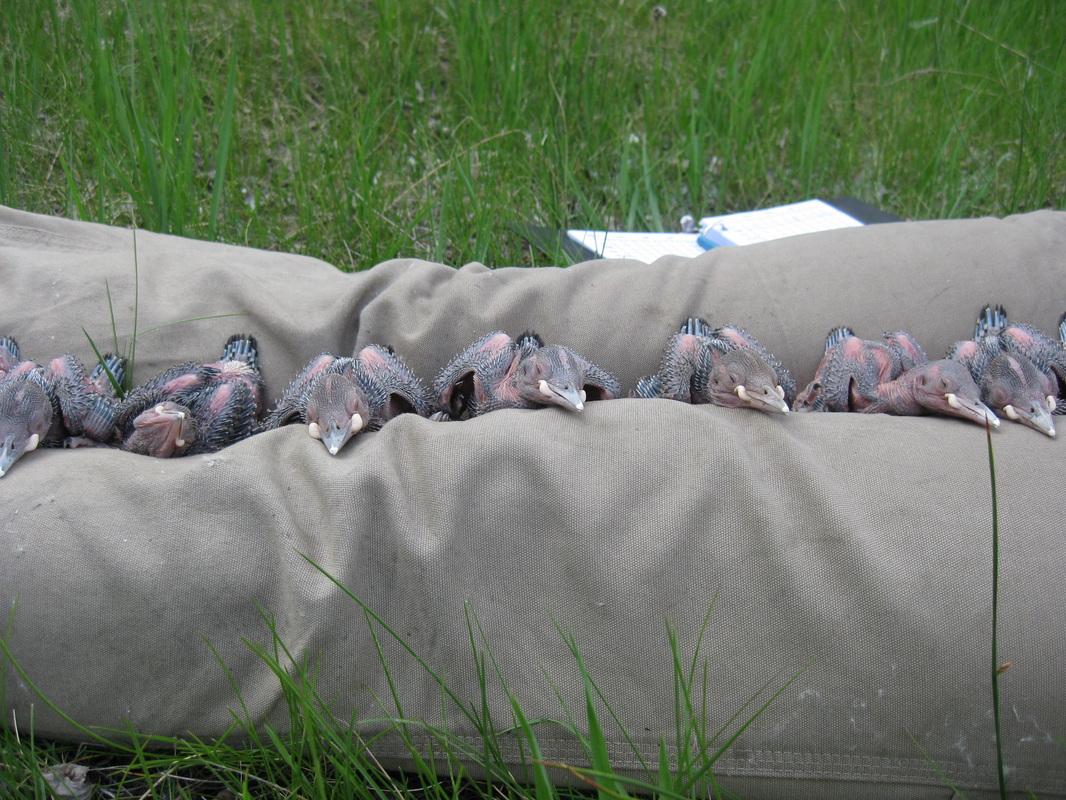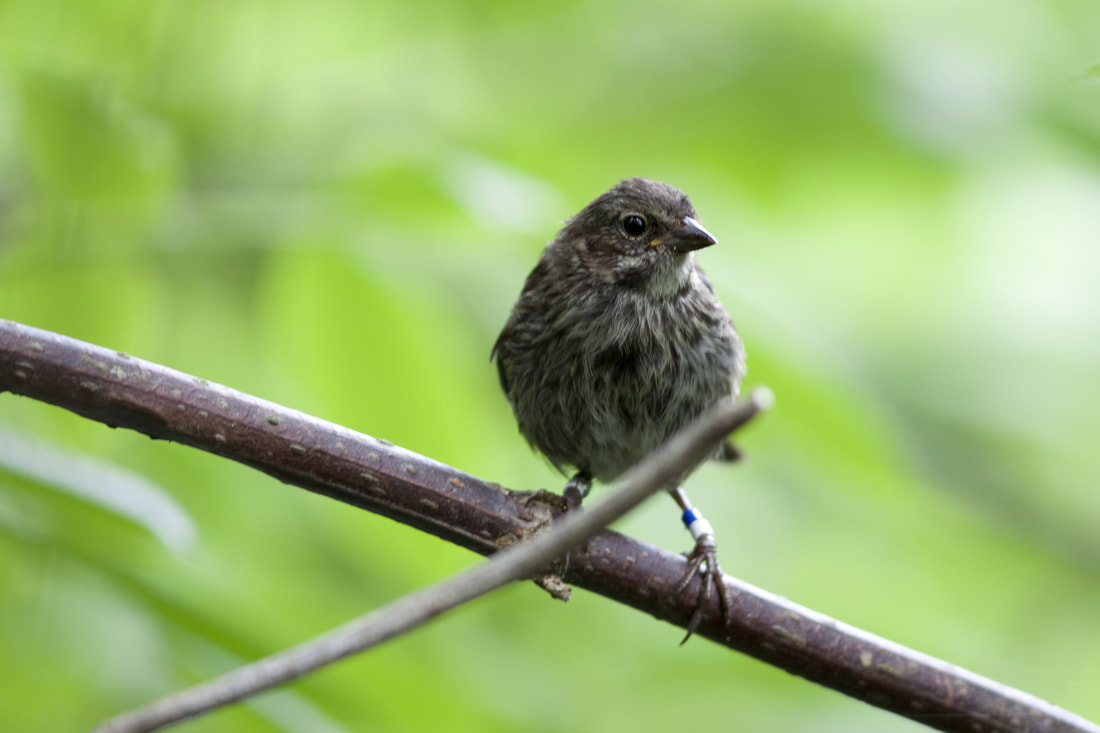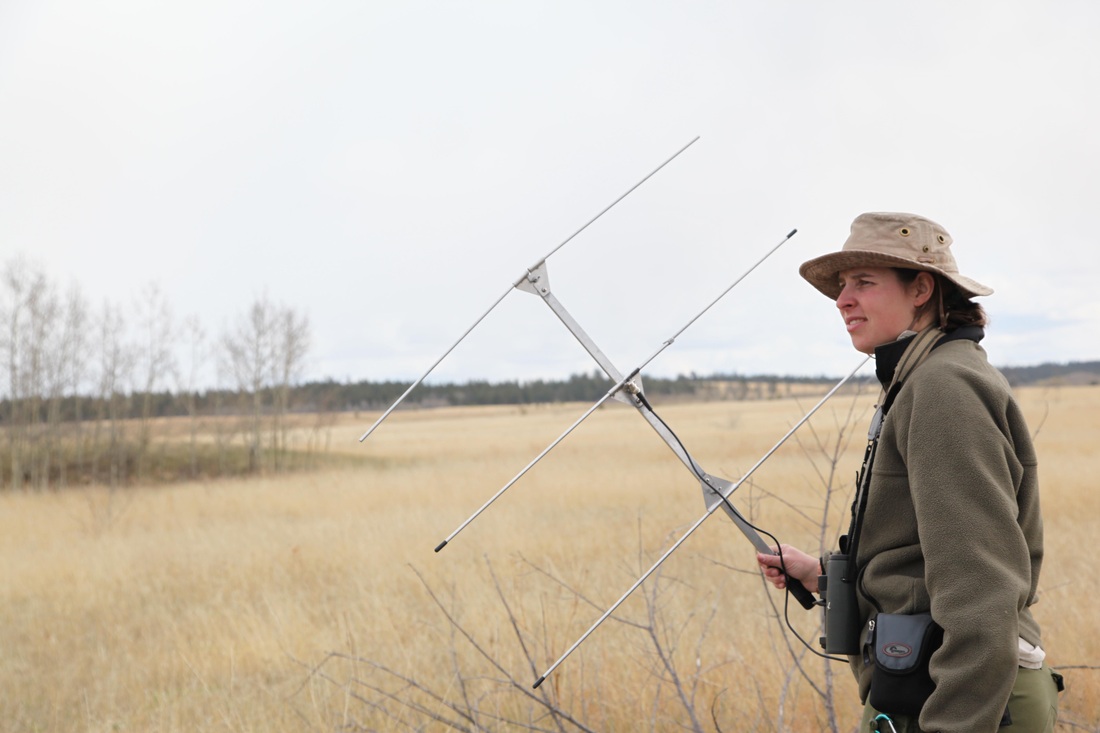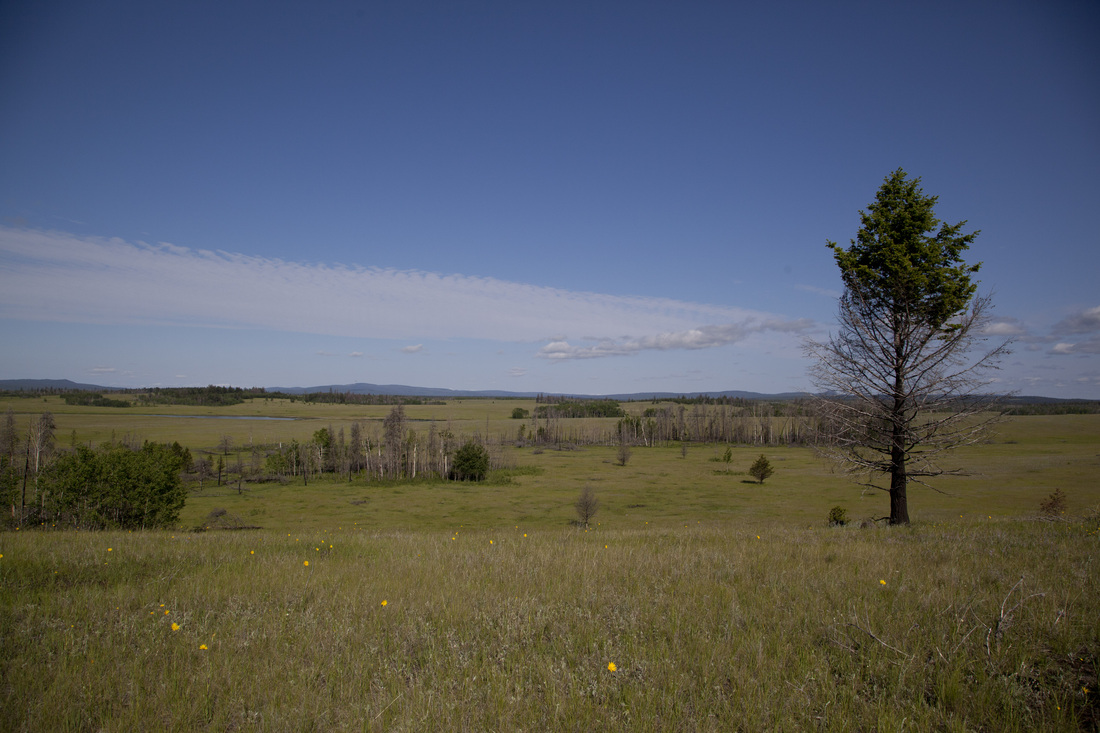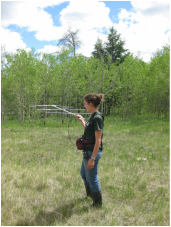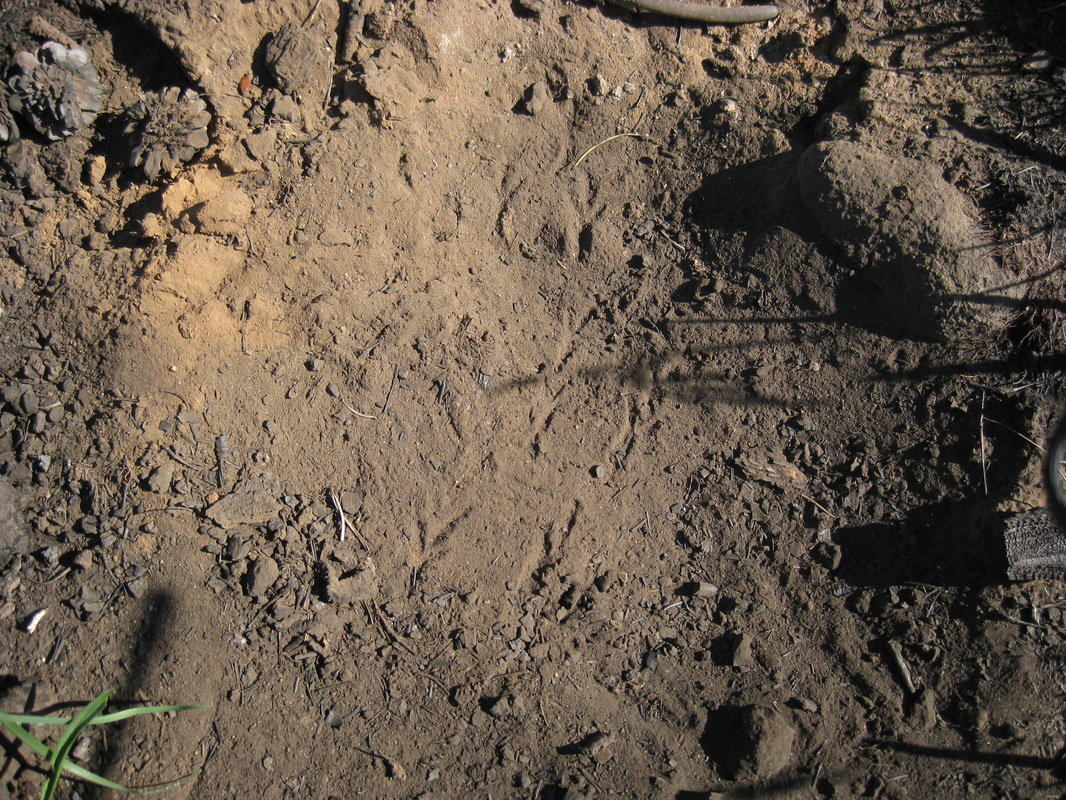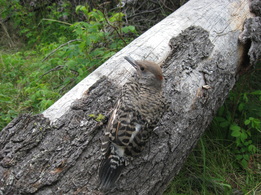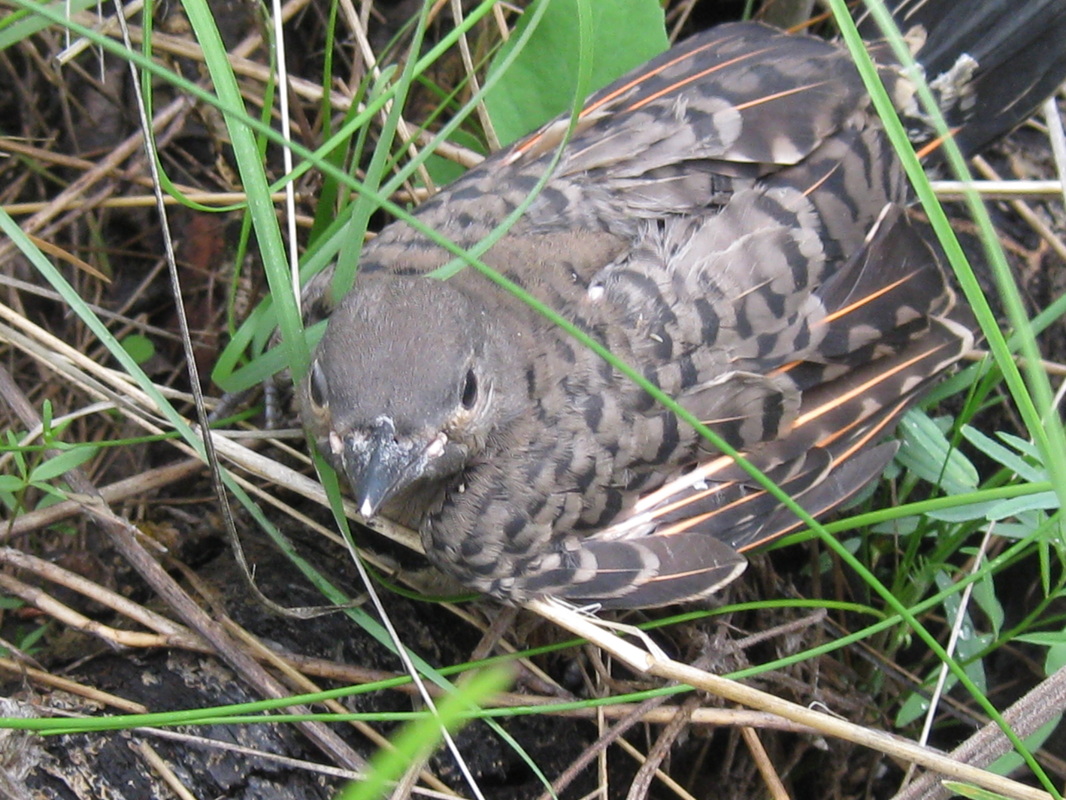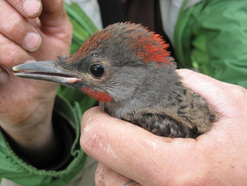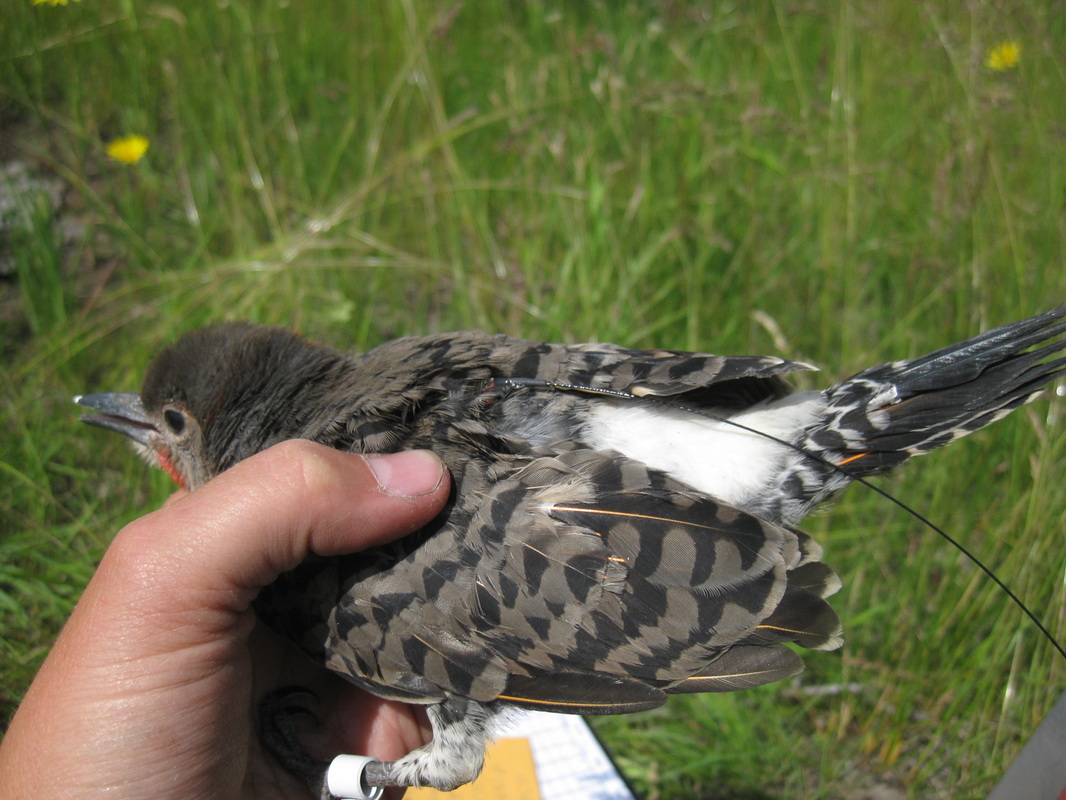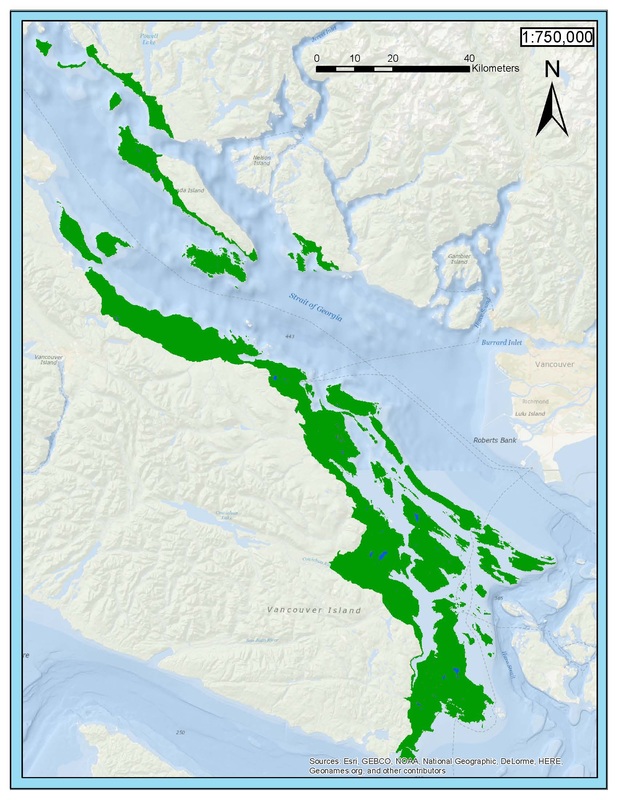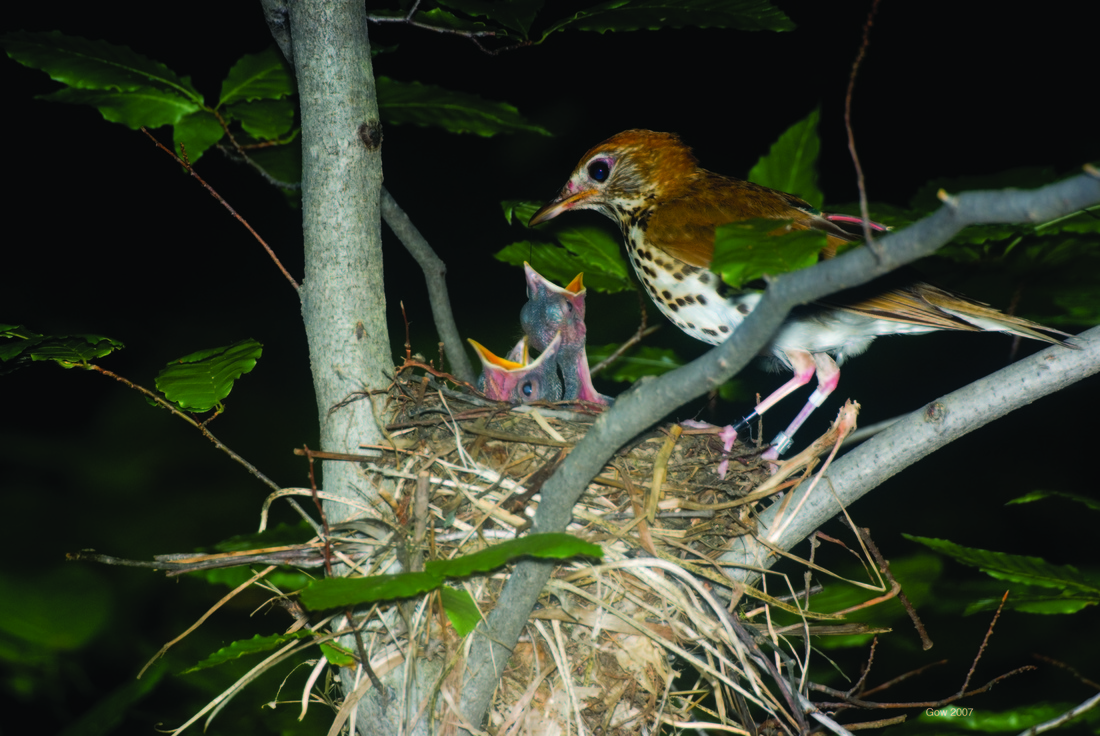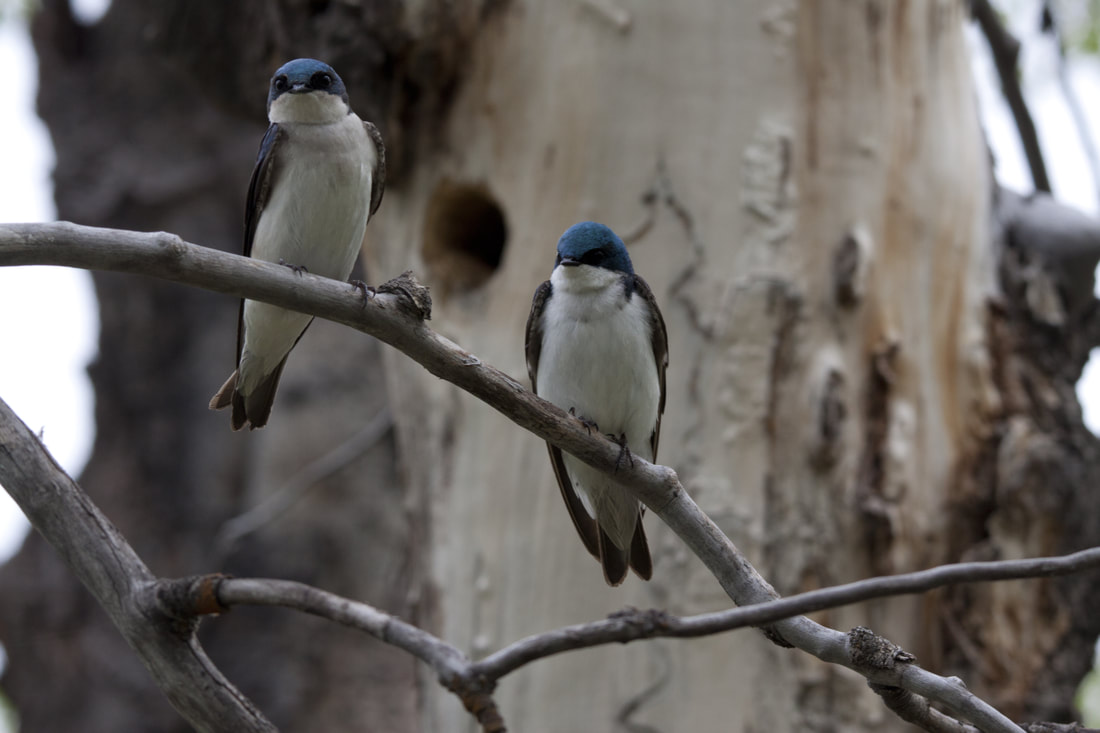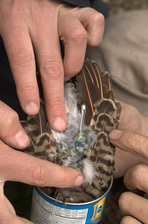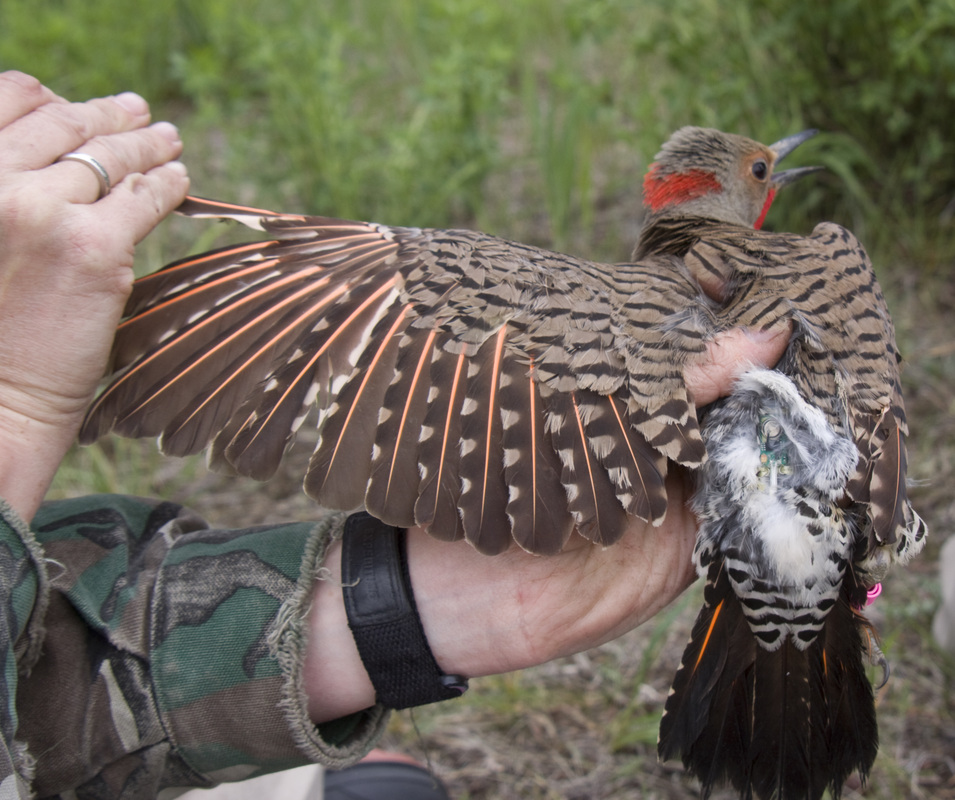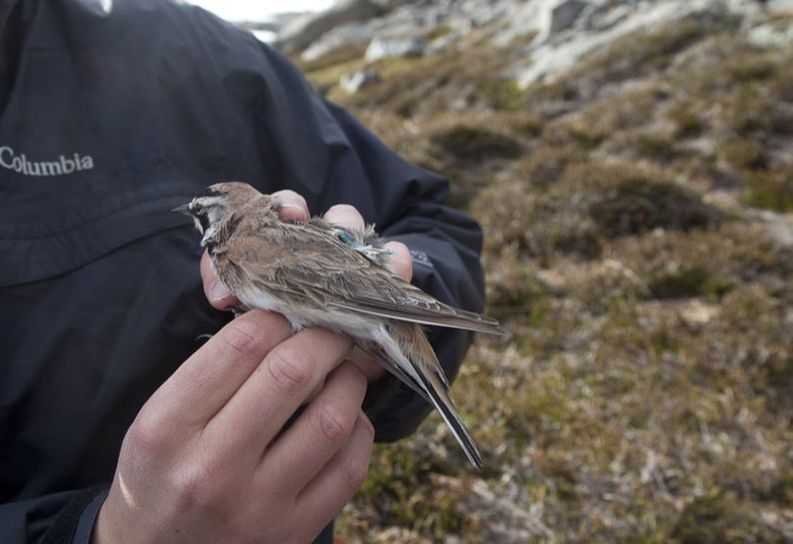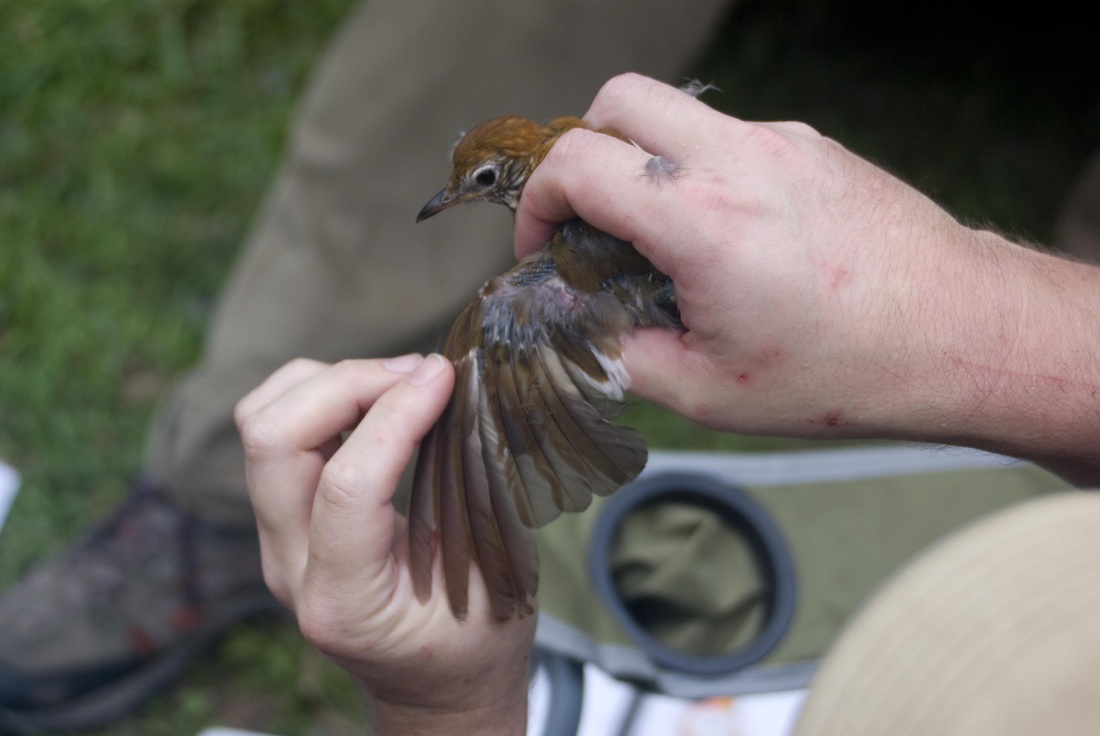Past Projects
Parental Care
For most birds both males and females are needed to help raise their young. However, males and females can differ in how much effort they are able or willing to invest in offspring care. Tackling questions about how and why the sexes differ in parental care can help us to understand some of the basic biological questions about the evolution of sex roles. The northern flicker is a great species to study sex differences in parental care because they have reversed sex roles where males contribute equally or more so to raising the brood than females. Females can also be facultatively polyandrous, meaning females may have two nests with two different males at the same time.
One of the unique aspects of my research involves studying parental care during multiple time periods, such as the nestling period and the post-fledging period (a relatively understudied time period in terms of parental care). I also how investment in parental care can carry-over to influence events in other periods of the annual cycle. I am currently examining parental care using a pedigreed population of song-sparrows to examine feeding effort of parents in relation to parent offspring relatedness and kinship. Publications: Reid JM, G Bocedi, P Nietlisbach, AB Duthie, ME Wolak, EA Gow, P Arcese. 2016. Variation in parent-offspring kinship in socially monogamous systems with extra-pair reproduction and inbreeding. Evolution 70:1512–19 DOI: 10.1111/evo.12953 Gow EA, & KL Wiebe. 2015. Nest sanitation in response to short-and long-term manipulations of brood size: males clean more in a sex-role reversed species. Animal Behaviour 104:137–143 doi: 10.1016/j.anbehav.2015.03.2014 Gow EA, & KL Wiebe. 2014. Flexibility in parental care only occurs when brood demands are reduced: a brood size experiment in a woodpecker with partially reversed sex roles. Ethology 120:881–892, doi: 10.1111/eth.12259 Gow EA, KL Wiebe. 2014. Determinants of parental care and offspring survival during the post-fledging period: males care more in a species with partially reversed sex roles. Oecologia 175:95–104 doi: 10.1007/s00442-014-2890-1 Gow E.A., & B.J.M. Stutchbury. 2013. Understanding sex differences in parental effort in a migratory songbird: examining a sex specific tradeoff between reproduction and molt. Condor 115:640−649 Gow E.A., A.B. Musgrove, & K.L. Wiebe. 2012. Brood age and size influence sex-specific parental provisioning patterns in a sex-role reversed species. Journal of Ornithology 154:525−535. |
Foraging Behaviour
Part of understanding parental care is routed in foraging behaviour. Birds that have a central nest site with dependent young are known as central place foragers. Central place foragers face additional constraints compared to other animals because they must make return trips to the nest from their foraging location, thus increasing their energy requirement for travel time. Because of the increased energy central place foragers expend, there can be strong connections between foraging strategies and provisioning rates. I radio-tracked parents to study the foraging behaviour of northern flickers while they were feeding young and compared whether males and females differ in their time budgets (amount of time foraging), the distances they traveled from the nest, and if they chose to forage in different microhabitats. I also investigated flexibility in foraging behaviour in response to changes in brood demands during a short term brood manipulation experiment. Additionally, I identified the prey items in faecal samples to see if males and females differed in the types of prey items they consumed. Remarkably, the diet of northern flickers consisted of over 99.99% ants! Publications: Gow EA, & KL Wiebe. 2014. Northern flicker mates foraging on renewing patches avoid competition not by separate niches but by segregation. Behavioral Ecology and Sociobiology 69: 101–108 doi: 10.1007/s00265-014-1822-8 Gow EA, & KL Wiebe. 2014. Flexibility in parental care only occurs when brood demands are reduced: a brood size experiment in a woodpecker with partially reversed sex roles. Ethology 120:881–892, doi: 10.1111/eth.12259 Gow E.A., R.J. Higgins, & K.L. Wiebe. 2013. Lack of diet segregation by male and female Northern Flickers foraging on ants in central British Columbia. Journal of Field Ornithology 84:262−269 Wiebe K.L., & E.A. Gow. 2013. Choice of foraging habitat by northern flickers reflects changes in availability of their ant prey linked to ambient temperature. Ecoscience. 20:122–130 doi:10.2980/20-2-3584 |
Fledgling Habitat Use
After nestlings leave the nest they become what we refer to as fledglings. During this time fledglings become free to move about the landscape, however, like humans learning to walk, becoming a strong flier can take some time. Unfortunately, for young birds, the first few weeks out of the nest can be a dangerous time, and it is not unusual for over half of newly fledged birds to be depredated by other animals. The type of habitat fledglings occupy can influence their survival. I spent three years radio-tracking juvenile northern flickers and their parents during the post-fledging period to understand their movements, habitat use, and survival, and have demonstrated how fledgling that are of an intermediate body mass and occupy thick habitats after they fledge are the most likely to survive.
Publications: Gow E.A., & W.L. Wiebe. 2013. Survival and habitat selection by fledgling Northern Flickers in a fragmented forest landscape. Journal of Wildlife Management 78:273–281 Gow E.A., K.L. Wiebe. 2013. Sexual conflict during the post-fledging period of a species with partially reversed sex roles: female brood desertion and offspring survival. Oecologia 175:95–104 |
Occupancy of Olive-sided flycatchers in British ColumbiaOlive-sided flycatchers are a declining species in British Columbia, and across Canada. According to the breeding bird survey, population declines may be as high as 80% in the last 50 years. One of the first steps in targeting conservation efforts is to determine the habitat a species occupies. I am working with Dr. Richard Schuster and Dr. Peter Arcese to develop occupancy maps for the Coast Douglas Fir Zone of British Columbia.
Migration
Animal migration has fascinated humans for centuries. Yet, studying animals that move thousands of kilometers is challenging. In 2007-2009, I worked with a team of researchers lead by Dr. Bridget Stutchbury that deployed the first-ever light-level geolocators, a migration tracking device, on songbirds. In 2007, we deployed 20 geolocators on wood thrush and 20 on purple martins, and then spent the winter waiting for the birds' to return the following year. Before this point, we did not have the technology available to follow small birds after they left their breeding grounds in the fall.
Light level geolocators are archival tags that consist of a microchip, a battery and a light sensor (placed on a stalk to avoid feathers). The light sensor records light levels every 1-2 minutes and stores this data in the 'mini computer'. When birds are recovered with a geolocator the information is downloaded onto a computer. Geolocator data gives us the timing of sunrise and sunset and then from this we can use day length to get latitude and the sunrise and sunset times to get longitude. The data can then be used to generate a map of the migratory routes of each bird. I have used geolocators to follow wood thrush, and northern flickers throughout their migrations and annual cycles and am now studying migration of tree swallows through collaborative efforts that involves following individual birds from breeding sites across North America (North Carolina to Alaska) to their non-breeding sites in the Southern USA, Mexico, the Caribbean and Central America. I am also collaborating with Kathy Martin (University of British Columbia) and a PhD Candidate, Devin de Zwaan, to track an alpine population of Horned Larks. Publications: DeZwaan, D^. S Wilson, EA Gow, K Martin. Sex-specific spatiotemporal variation and carry-over effects in a migratory alpine songbird Frontiers in Ecology and Evolution 7:285 DOI: doi.org/10.3389/fevo.2019.00285 (Part of Research Topic: Flexibility in the Migration Strategies of Animals) Knight SM^, DW Bradley, RG Clark, EA Gow, M Bélisle, L Berzins, T Blake, ES Bridge, RD Dawson, PO Dunn, D Garant, G Holroyd, AG Horn, DJT Hussell, O Lansdorp, AJ Laughlin, ML Leonard, F Pelletier, D Shutler, L Siefferman, C Taylor, H Trefry, CM Vleck, D Vleck, DW Winkler, LA Whittingham, DR Norris. Non-breeding season movements of a migratory songbird are related to declines in resource availability. The Auk: Ornithological Advances ukz028 DOI: 10.1093/auk/ukz028 Gow EA, L Burke, DW Winkler, SM Knight, DW Bradley, RG Clark, M Bélisle, L Berzins, T Blake, ES Bridge, RD Dawson, PO Dunn, D Garant, G Holroyd, AG Horn, DJT Hussell, O Lansdorp, AJ Laughlin, ML Leonard, F Pelletier, D Shutler, L Siefferman, C Taylor, H Trefry, CM Vleck, D Vleck, LA Whittingham, DR Norris. 2019. A range-wide domino effect and resetting of the annual cycle in a migratory songbird. Proceedings of the Royal Society B 286: 20181916 Knight SM^, DW Bradley, RG Clark, EA Gow, M Bélisle, L Berzins, T Blake, ES Bridge, RD Dawson, PO Dunn, D Garant, G Holroyd, AG Horn, DJT Hussell, O Lansdorp, AJ Laughlin, ML Leonard, F Pelletier, D Shutler, L Siefferman, C Taylor, H Trefry, CM Vleck, D Vleck, DW Winkler, LA Whittingham, DR Norris. 2018. Constructing and evaluating a continent-wide migratory songbird network across the annual cycle. Ecological Monographs 88:445–460 Gow EA. 2015. Analyzing geolocator data for birds that roost in cavities year-round. Journal of Field Ornithology 87:74–83 DOI: 10.1111/jofo.12130 Gow EA, & KL Wiebe. 2014 Males migrate farther than females in a differential migrant: an examination of the fasting endurance hypothesis. Royal Society Open Science 1:140346 doi: 10.1098/rsos.14034 Gow EA, KL Wiebe, & J Foxe. 2014 Cavity use throughout the annual cycle of a migratory woodpecker revealed by geolocators. Ibis, doi: 10.1111/ibi.12206 Stutchbury, B.J., S. A. Tarof, T. Done, E. Gow, P.M. Kramer, J. Tautin, J. W. Fox, V. Afanasyev. 2009. Tracking long-distance songbird migration by using geolocators. Science. 323:896. |
Seasonal Interactions
One basic concept in ecology suggests there are costs and benefits to everything. For migratory animals decisions made during one period of the annual cycle may have negative or positive repercussions into other time periods. Some of the research I conducted on wood thrush has shown that birds that breed late delay moult, and subsequently delay migration.
Currently, I am using geolocators to help study how breeding effort influences the timing of annual cycle events in tree swallows. Publications: Stutchbury, B.J.*, E.A. Gow*, T. Done, M. MacPherson, J.W. Fox and V. Afanasyev. 2011. Effects of post-breeding moult and energetic condition on timing of songbird migration into the tropics. Proceedings of the Royal Society B. 278:131−137. Physiological response to stressors during moultWhen animals respond to stressors (e.g. adverse weather, food shortages, predators, breeding, and etc.) they produce a hormone that helps them respond. In birds, this hormone is called corticosterone (CORT). When a feather is grown CORT is deposited into the feather, giving an integrated measure of CORT during the time of feather growth (e.g. during moult). By measuring feather CORT I am able to determine how individuals are responding to stressors. Currently, I am collaborating with Dr. Michael Romero to measure CORT in song sparrows feathers to examine the impacts on the timing of end of breeding and physiological responses to stressors during moult.
See my previous publications that use feather CORT: Gow EA, & KL Wiebe. 2014. Flexibility in parental care only occurs when brood demands are reduced: a brood size experiment in a woodpecker with partially reversed sex roles. Ethology 120:881–892, doi: 10.1111/eth.12259 Gow EA, KL Wiebe. 2014. Determinants of parental care and offspring survival during the post-fledging period: males care more in a species with partially reversed sex roles. Oecologia 175:95–104 doi: 10.1007/s00442-014-2890-1 Gow EA, & KL Wiebe. 2014. Survival and habitat selection by fledgling northern flickers in a fragmented forest landscape. Journal of Wildlife Management. 78:273–281 doi: 10.1002/jwmg.657 |
Other projects
I am open to collaborators that may be interested in any aspects of my work, contact me if interested.
|
